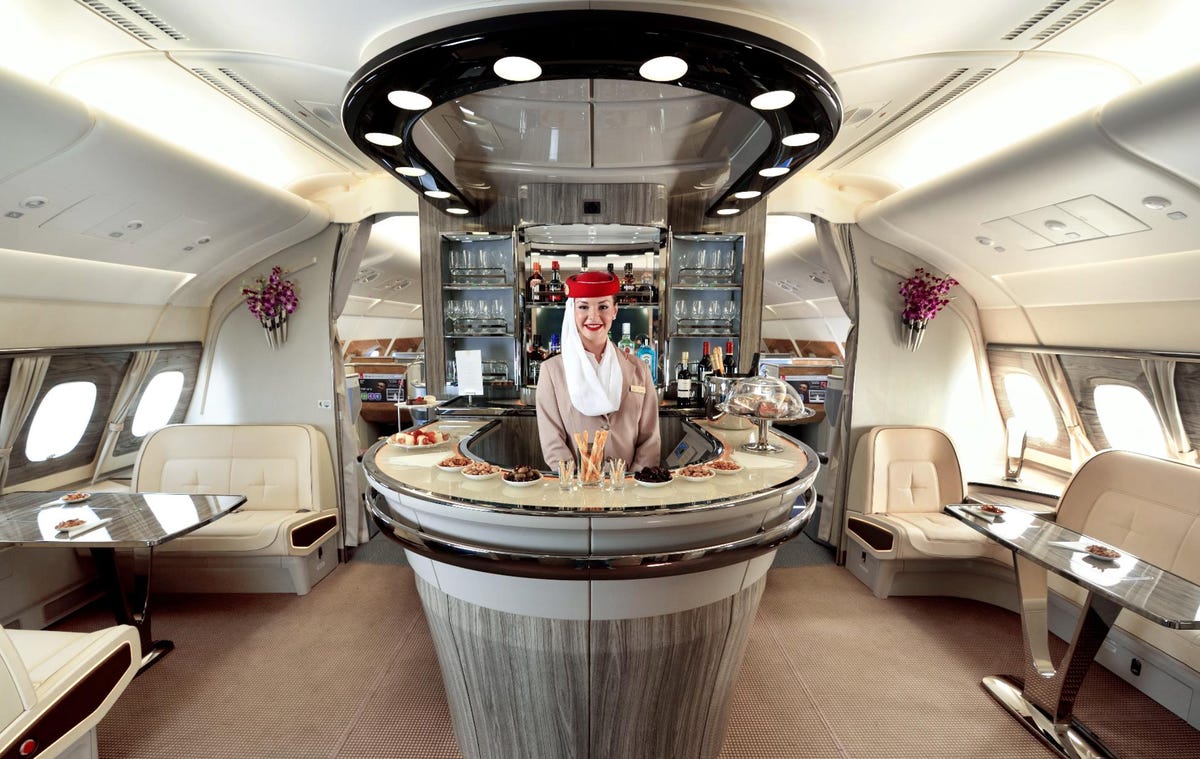Some drinks just sound and taste better when sipped in the air. Ginger ale seems to enjoy outsized popularity among passengers, but nothing outshines the in-flight bloody mary — an almost ritualistic cocktail or mocktail order for many a frequent flyer.
On the ground, the salty, spicy and umami-rich mixed drink is mostly relegated to brunch. At a cruising altitude, the bloody mary often feels like the right move, no matter what time of day it is. So is it just one of those things or is there an explanation for why the bloody mary (and other drinks) taste so darn good on an airplane?
As CNET’s resident food and drink guy, I’m always investigating the what, why and how regarding the best stuff to snack and sip on. That’s everything from hacking your meal kit subscription to cooking perfect bacon without the mess and nailing a drink order, even at 35,000 feet.
I asked Darren Bott, vice president of global food and beverage for Emirates Airlines about the outsized popularity of certain on-board beverages. Emirates is consistently ranked among the best airlines for in-flight food and drink, so it’s no surprise that the brand’s top culinary mind accounts for how taste buds operate differently on an airplane.
It turns out there’s some science behind those bloody mary cravings. While you might guess that it’s the change in pressure that causes our altered ordering impulses, Bott explains why that’s not really the case. What’s more, bloody marys prove to be a better pick than other mixed drinks if your’re trying to avoid dehydration during a flight.
Here’s more on how our tastes change on an airplane, and why a bloody mary really is the perfect in-flight order.

It turns out certain drinks really do hit a different on an airplane.
What is it exactly about the bloody mary?
One of the primary drivers behind the in-flight love for the tomato-based cocktail lies in the tomato’s high acidity, which has the benefit of stimulating salivation, ensuring a well-moisturized mouth. As a bonus, the low sugar content helps passengers stay (relatively) hydrated throughout a flight.
Do these factors impact drinks with more refined profiles like wine and whiskey?
Certain aromas and flavors will be harder to detect due to the impact decreased humidity has on our senses. For a booze like whiskey, the cabin environment can impact a person’s ability to detect fruit, increasing the perception of oak and drawing out flavors that at other times might not be as prominent. The aircraft’s low humidity levels can compound the volatile aroma of some wines, causing certain flavors to be more pronounced than normal when aboard a flight.
